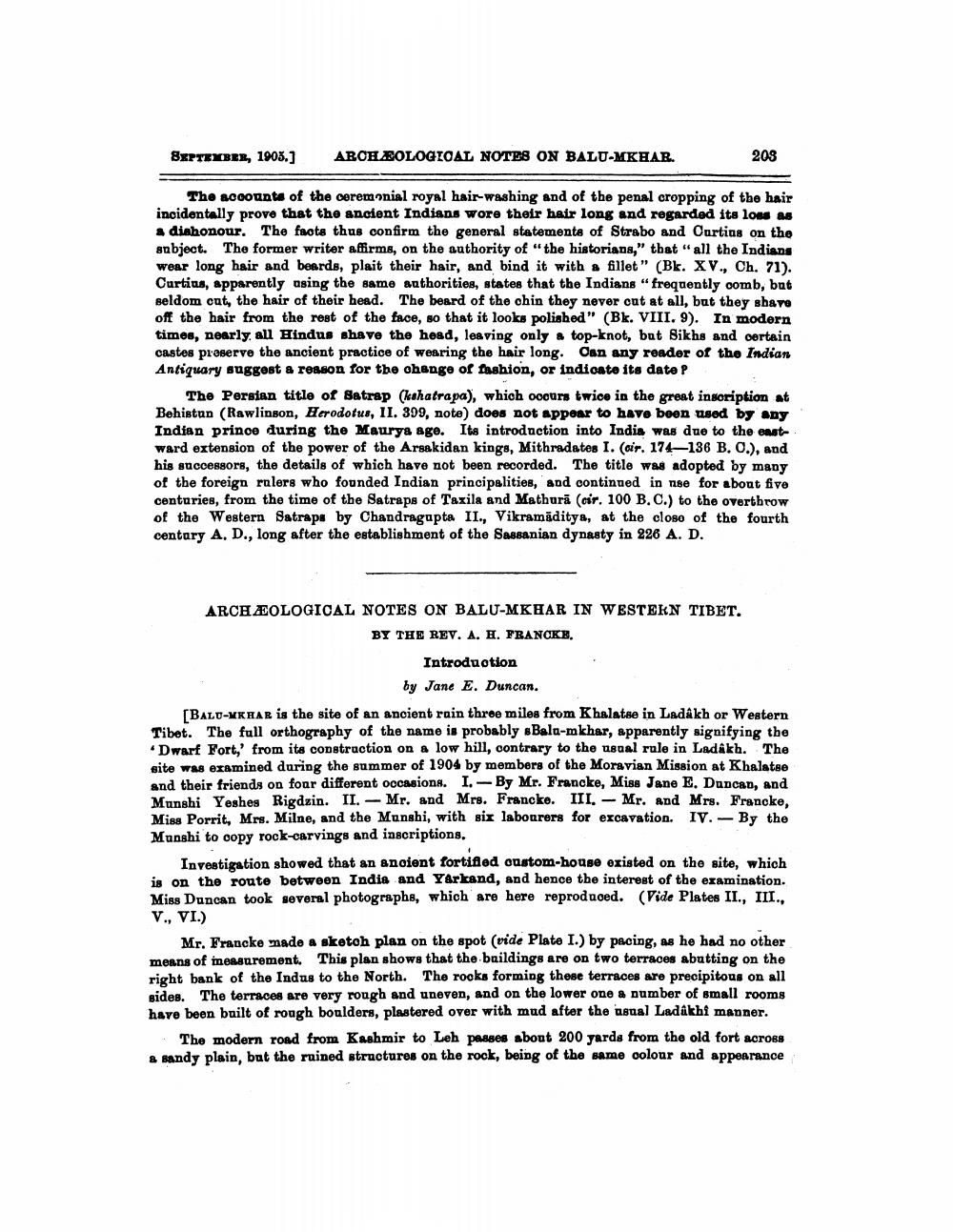________________
SEPTEIBER, 1905.]
ABCH/BOLOGOAL NOTES ON BALU-MKHAR.
203
The accounts of the ceremonial royal hair-washing and of the penal cropping of the hair incidentally prove that the ancient Indians wore their hair long and regarded its low as a dishonour. The faots thus confirm the general statements of Strabo and Curtius on the anbject. The former writer affirms, on the authority of "the historians," that "all the Indians wear long hair and beards, plait their hair, and bind it with a fillet" (Bk. XV., Ch. 71). Curtins, apparently using the same authorities, states that the Indians " frequently comb, bat seldom cat, the hair of their head. The beard of the chin they never cut at all, but they share off the hair from the rest of the face, so that it looks polished" (Bk. VIII. 9). In modern times, nearly all Hindus shave the head, leaving only a top-knot, but Bikhs and certain castes preserve the ancient practice of wearing the hair long. Can any reader of the Indian Antiquary suggest a reason for the change of fashion, or indicate its date P
The Persian title of Satrap (kshatrapa), which ooours twice in the great insoription at Behistan (Rawlinson, Herodotus, II. 399, note) does not appear to have been used by any Indian prince during the Maurya age. Ita introduction into India was due to the eastward extension of the power of the Arsakidan kings, Mithradates I. (oir. 174136 B. 0.), and his successors, the details of which have not been recorded. The title was adopted by many of the foreign rulers who founded Indian principalities, and continued in nse for about five centuries, from the time of the Satraps of Tazila and Mathură (cir. 100 B.C.) to the overthrow of the Western Satraps by Chandragapta II., Vikramaditya, at the close of the fourth century A, D., long after the establishment of the Sassanian dynasty in 226 A. D.
ARCHÆOLOGICAL NOTES ON BALU-MKHAR IN WESTERN TIBET.
BY THE REV. A. H. FRANCKE.
Introduotion
by Jane E. Duncan. BALU-MKHAR is the site of an ancient rain three miles from Khalatae in Ladakh or Western Tibet. The full orthography of the name is probably sBala-mkhar, apparently signifying the
Dwarf Fort, from its construction on a low hill, contrary to the usual rule in Ladakh. The site was examined during the summer of 1904 by members of the Moravian Mission at Khalatse and their friends on four different occasiona. I. - By Mr. Francke, Miss Jane E. Duncan, and Munshi Yeshes Rigdzin. II. - Mr. and Mrs. Francke. III. - Mr. and Mrs. Francke, Miss Porrit, Mrs. Milne, and the Munshi, with six labourers for excavation. IV. - By the Munshi to copy rock-carvings and inscriptions.
Investigation showed that an ancient fortified oustom-houge existed on the site, which is on the route between India and Yarland, and hence the interest of the examination. Miss Duncan took several photographs, which are here reproduced. (Vide Plates II., III., V., VI.)
Mr. Francke made a sketon plan on the spot (vide Plate I.) by pacing, as he had no other means of measurement. This plan shows that the buildings are on two terraces abutting on the right bank of the Indus to the North. The rooks forming these terraces are precipitous on all gides. The terraces are very rough and uneven, and on the lower one a number of small rooms have been built of rough boulders, plastered over with mud after the usual Ladakhi manner.
The modern road from Kashmir to Leh passes about 200 yards from the old fort across & sandy plain, but the ruined structures on the rock, being of the same colour and appearance




